The Oregon coast is home to an array of fascinating bird species that offer a glimpse into the region’s diverse ecosystem.
These birds have adapted to their coastal habitats, and their distinct characteristics and behaviors have captured the attention of bird enthusiasts and naturalists alike.
From shorebirds such as sandpipers and plovers to magnificent bald eagles, the Oregon coast offers an ideal habitat for a wide variety of avian creatures.
Whether you are a seasoned birdwatcher or simply a curious nature observer, the Oregon coast offers an incredible opportunity to observe some of the most beautiful and intriguing bird species in the world.
In this article, we will explore the various bird species thriving along the Oregon coast and learn more about the fascinating world of bird ecology.
1. Pelagic Cormorant
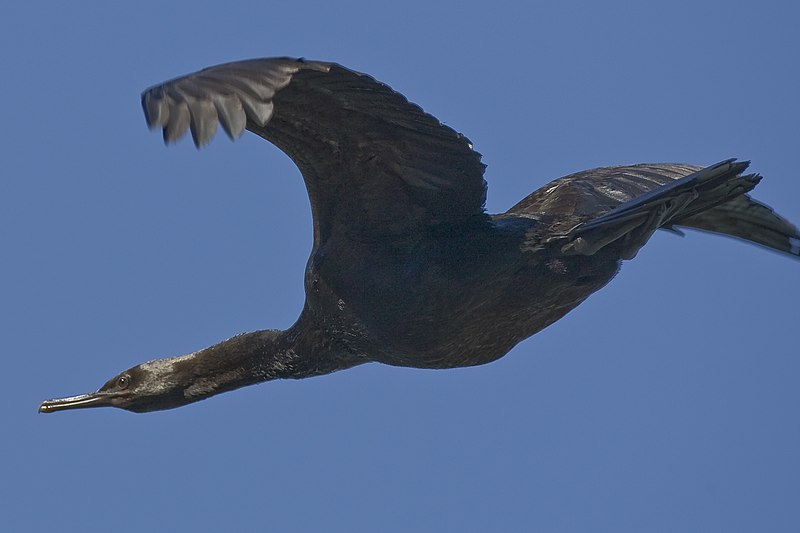
The pelagic cormorant, also known as Baird’s cormorant or violet-green cormorant, is a small member of the Phalacrocoracidae family and is often referred to as the Pelagic Shag.
It inhabits coastal areas and open oceans throughout Northern Pacific regions. These birds are relatively small in size with a dark greyish body and bright blue eyes which can be seen from far away distances.
Their wingspan extends up to two feet wide allowing them to glide through air currents at rapid speeds while they hunt fish for food.
They have an impressive diving ability that allows them to plunge underwater depths reaching 30 meters deep.
The pelagic cormorants are quite social creatures who live together in large flocks during both summer and winter months providing safety in numbers when hunting prey beneath the waves of their ocean home.Scientific classification:
| Kingdom | Animalia |
| Phylum | Chordata |
| Class | Aves |
| Order | Suliformes |
| Family | Phalacrocoracidae |
| Genus | Urile |
| Species | U. pelagicus |
Also Featured In: Native South Korean Birds, Birds that Live in Vancouver
2. Oystercatchers
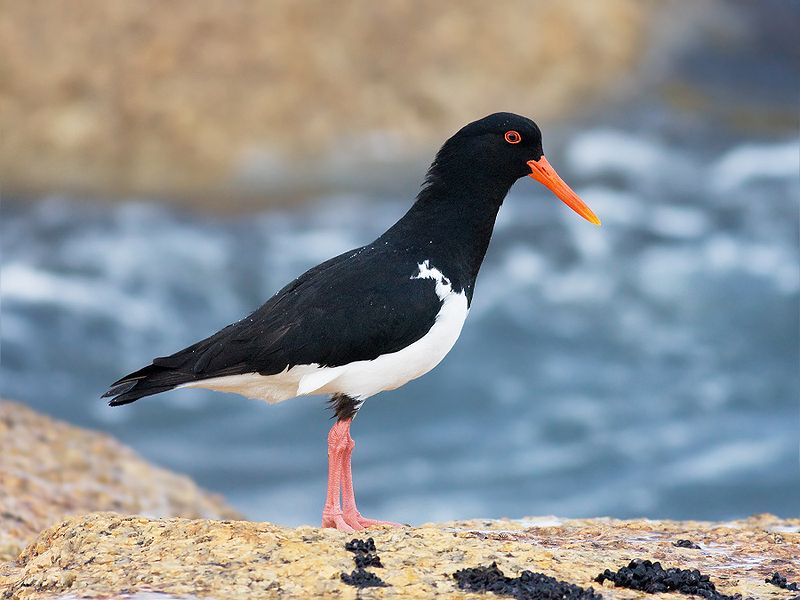
Oystercatchers are a family of waders forming the Haematopodidae, with one genus; Haematopus.
They live in coastal regions around the world excluding both polar and some tropical areas of Africa & South East Asia.
Eurasian, South Island & Magellanic oystercatcher species also breed far inland – breeding grounds being found much deeper than other members of the family.
They have long beaks used to feed on molluscs such as mussels, clams and oysters which they crack open using their strong bills.
Oystercatchers are usually quite vocal birds making various loud calls when disturbed or alarmed.
The males tend to display more brightly coloured plumage compared to females who share similar brown/black hues for camouflage purposes during nesting season.Scientific classification:
| Kingdom | Animalia |
| Phylum | Chordata |
| Class | Aves |
| Order | Charadriiformes |
| Suborder | Charadrii |
| Family | Haematopodidae Bonaparte, 1838 |
| Genus | Haematopus Linnaeus, 1758 |
Also Featured In: Best Birds Watching in Austria, Native Birds of Kazakhstan
3. Common Murre
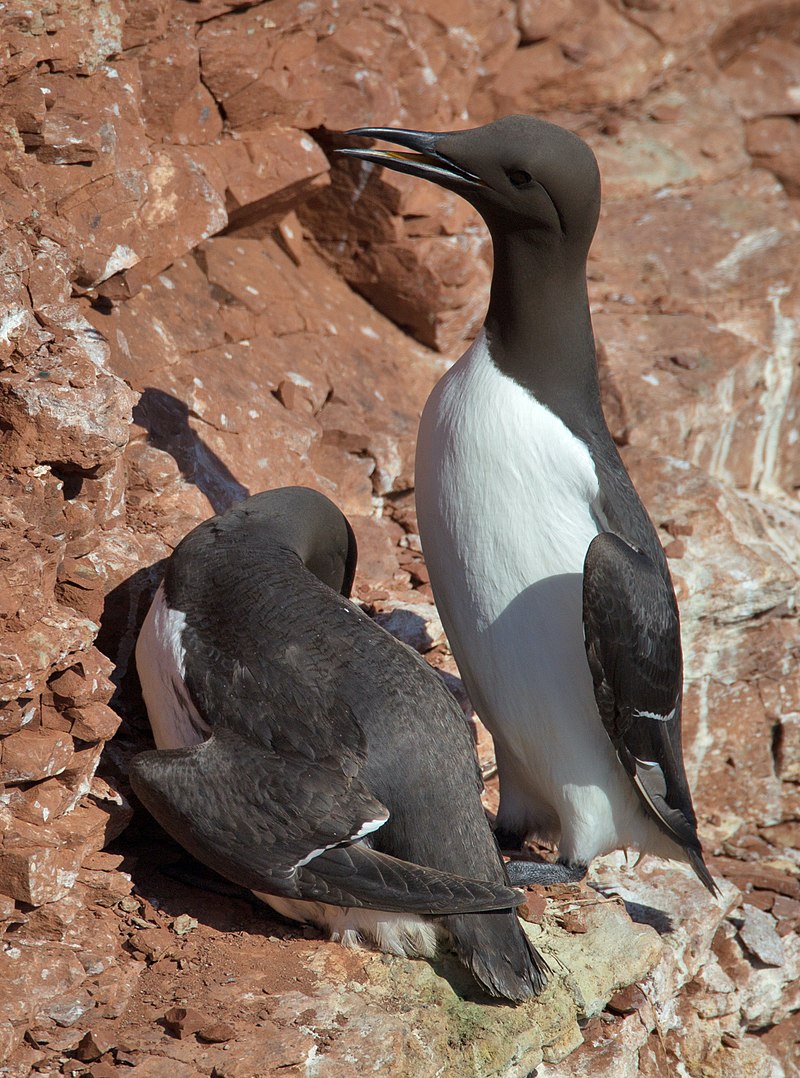
The Common Murre, also known as a Common Guillemot is an Arctic and Boreal seabird that can be seen in North Atlantic and North Pacific oceans.
It has a stocky body with white underparts, black upper parts and striking yellow legs.
They are relatively large birds compared to their relatives but have weak flying abilities – they fly fast but not very agilely.
Their agility lies underwater instead where they are able to dive deep into the ocean depths for food such as fish, crustaceans or molluscs.
During breeding season these birds come ashore on rocky cliffsides or islands where they create burrows for nesting purposes.
The female lays one egg each year which both parents share incubation duties over it until hatching at around 30 days later.Scientific classification:
| Kingdom | Animalia |
| Phylum | Chordata |
| Class | Aves |
| Order | Charadriiformes |
| Family | Alcidae |
| Genus | Uria |
| Species | U. aalge |
Also Featured In: Norway Birds, Most Common Scotland Birds
4. Tufted Puffin
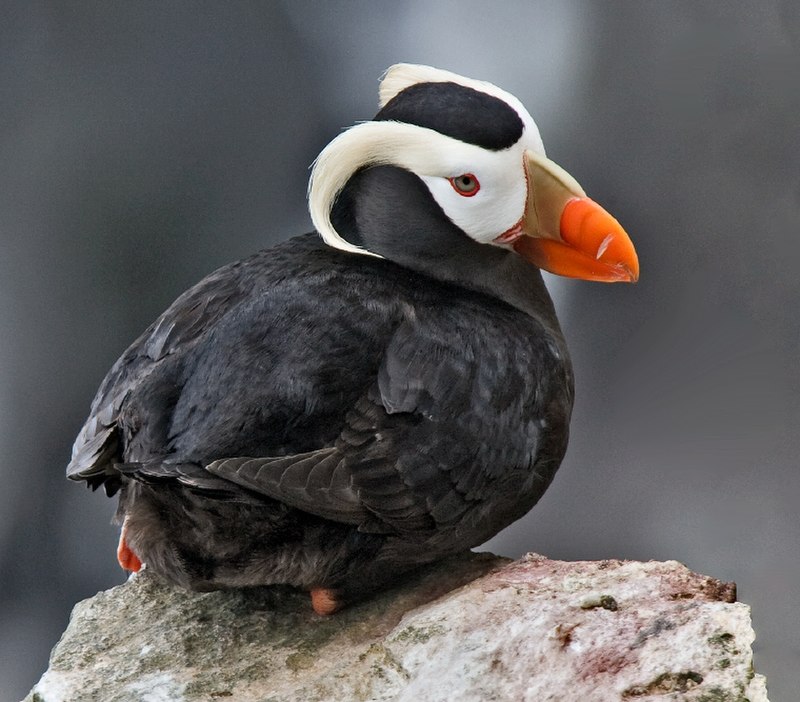
The Tufted Puffin is a medium-sized seabird belonging to the Alcidae family. It can be recognized by its thick red bill and yellow tufts, which give it an unmistakable appearance.
These birds inhabit the North Pacific Ocean and are relatively abundant compared to other species of puffin.
They measure around 35 cm in length with a similar wingspan, making them one of the smaller members of their genus Fratercula.
In terms of feeding habits they mainly eat small fish like herring or anchovies while at sea but also take advantage of food sources near shore when breeding season arrives.
Their eggs are laid in burrows that these feathered creatures dig into cliff faces for protection from predators; once hatched both parents help raise their young until they fledge later on in life.Scientific classification:
| Kingdom | Animalia |
| Phylum | Chordata |
| Class | Aves |
| Order | Charadriiformes |
| Family | Alcidae |
| Genus | Fratercula |
| Species | F. cirrhata |
Also Featured In: Auks Species, Birds You’ll Find in the Sea
5. Pigeon Guillemot
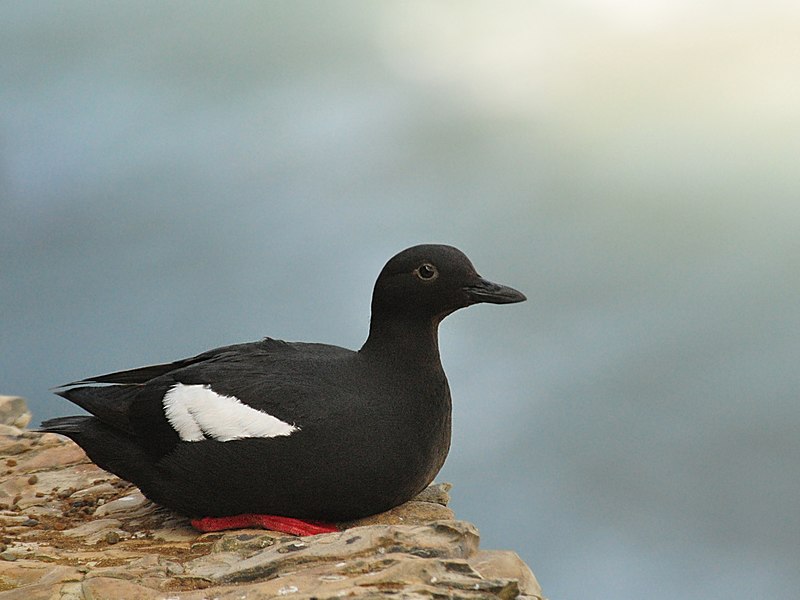
The pigeon guillemot is an interesting species of bird, belonging to the auk family. It has five subspecies, all with striking black and brown plumage that shimmers in sunlight.
When breeding, they have a distinctive wing patch broken up by a brown-black wedge for easy identification.
They are closely related to spectacled guillemots and share many features such as their razor sharp beaks which help them catch fish from the sea depths below.
These birds can often be spotted on rocky shores or offshore islands where there is plenty of food available for them to feed upon.
Their unique appearance makes them stand out amongst other types of seabirds making it easier for us humans to observe these wonderful creatures.Scientific classification:
| Kingdom | Animalia |
| Phylum | Chordata |
| Class | Aves |
| Order | Charadriiformes |
| Family | Alcidae |
| Genus | Cepphus |
| Species | C. columba |
Also Featured In: Birds that Live near Bering Island, Isla Lobos Birds You Need To Know
6. Western Gull
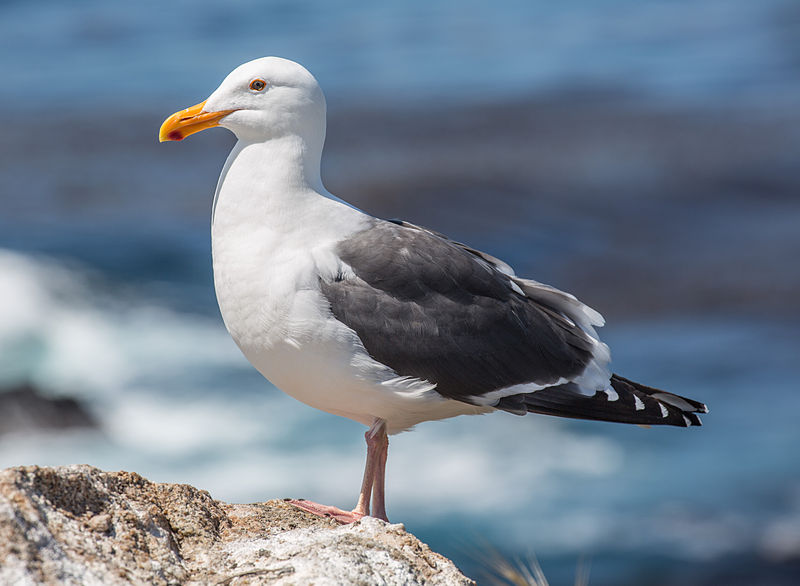
The Western Gull is a majestic seabird found on the West Coast of North America, ranging from British Columbia to Baja California. It has a large white head and stands between 22-27 inches in size.
Its upper parts are gray while its underparts range from brownish grey to white depending on age or sex of the bird.
The most distinguishing feature is its yellow feet which set it apart from other gulls in the area such as Larus livens.
These birds feed by scavenging for food including fish, mollusks, crustaceans and even carrion when available.
They also nest near ocean shores with their eggs hatching anywhere within 28 days after being laid. A beautiful sight to behold at any beach; these birds will surely captivate you with their grandeur.Scientific classification:
| Kingdom | Animalia |
| Phylum | Chordata |
| Class | Aves |
| Order | Charadriiformes |
| Family | Laridae |
| Genus | Larus |
| Species | L. occidentalis |
Also Featured In: Gulls Species, Birds that Live in the Ocean
7. Snowy Plover

The Snowy Plover is a small wader bird, about 5-7″ in length. It breeds in the southern and western United States, the Caribbean, Ecuador, Peru and Chile.
Once thought to be a subspecies of the Kentish plover it has since been reclassified as its own species.
In order to protect nesting areas along Central California’s coastlines parts or entire beaches are closed off during breeding season for this endangered species.
This rare bird can easily be identified by its sandy brown color with white underbelly that helps camouflage itself from predators while on land but stands out when taking flight due to its brilliant white wingspan which provides an eye catching display against blue sky backdrop.Scientific classification:
| Kingdom | Animalia |
| Phylum | Chordata |
| Class | Aves |
| Order | Charadriiformes |
| Family | Charadriidae |
| Genus | Charadrius |
| Species | C. nivosus |
Also Featured In: Common Californian Birds, Birds that Live in San Francisco Bay Area
8. Western Snowy Plover
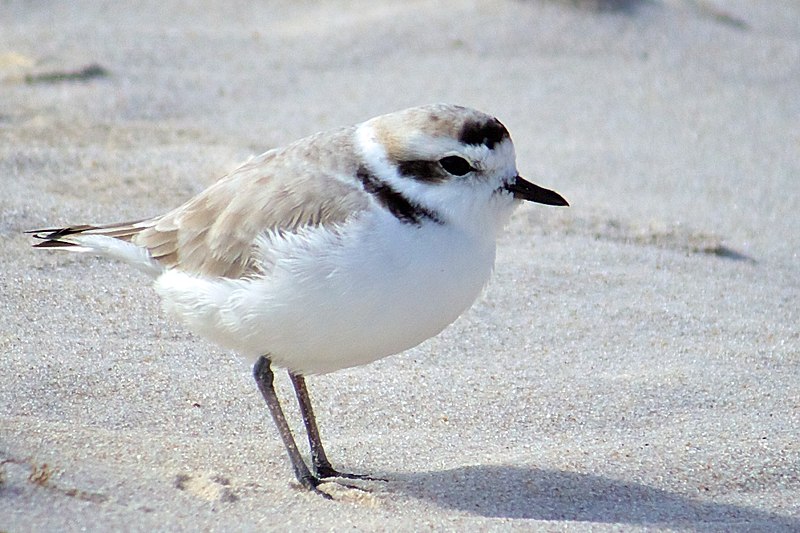
The western snowy plover is a small wader belonging to the plover bird family. It breeds in various areas of the United States and Caribbean, but its population has been decreasing over time due to habitat loss and other threats.
For this reason, on March 5th 1993 it was listed as threatened species under the Endangered Species Act of 1973.
In order to protect their habitats along California’s coast, Oregon’s coast and Washington’s coasts they have also been designated as critical habitats by The U.S Fish & Wildlife Service in 2012.
Conservation efforts are being taken for these birds including beach closures during nesting season; however more needs to be done if we want them safe from extinction. We must take action now before it’s too late.Scientific classification:
| Kingdom | Animalia |
| Phylum | Chordata |
| Class | Aves |
| Order | Charadriiformes |
| Family | Charadriidae |
| Genus | Charadrius |
| Species | C. nivosus |
| Subspecies | C. n. nivosus |
Also Featured In: Estuaries Birds,
9. Brown Pelican

The majestic brown pelican is a dive-feeding bird that belongs to the pelican family. It is one of the three pelican species found in the Americas and is known to dive into water to catch its prey.
From the Atlantic Coast of New Jersey to the mouth of the Amazon River, and along the Pacific Coast from British Columbia to northern Chile, including the Galapagos Islands, this bird can be found.
Its scientific name is Pelecanus occidentalis, and it has a colored brown plumage, which is its distinct characteristic.
The brown pelican belongs to the largest bird species that exist today, with a wingspan that can stretch up to seven feet long.
This bird helps maintain a balance in the ecosystem by eating smaller fish, crustaceans, and other aquatic prey.Scientific classification:
| Kingdom | Animalia |
| Phylum | Chordata |
| Class | Aves |
| Order | Pelecaniformes |
| Family | Pelecanidae |
| Genus | Pelecanus |
| Species | P. occidentalis |
Also Featured In: Water Birds Live around Us, Flight Birds You Should Know